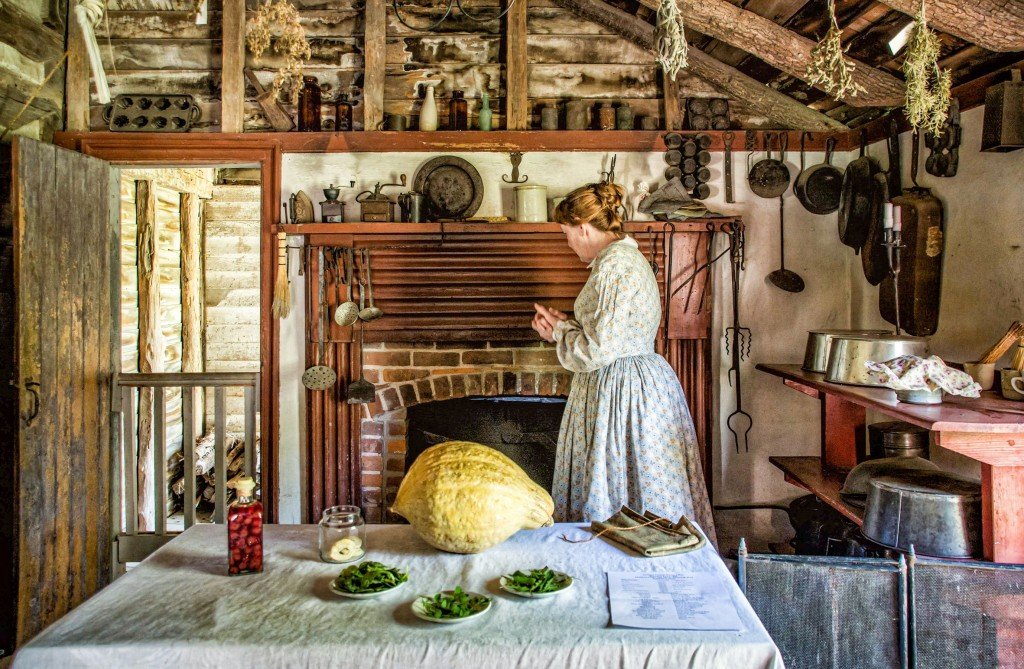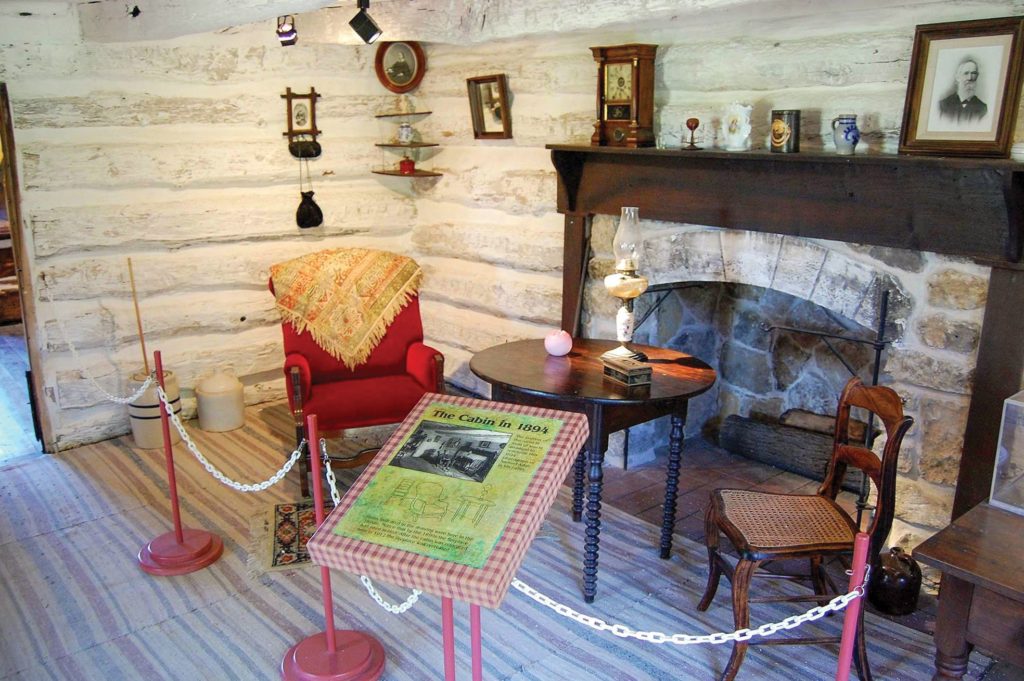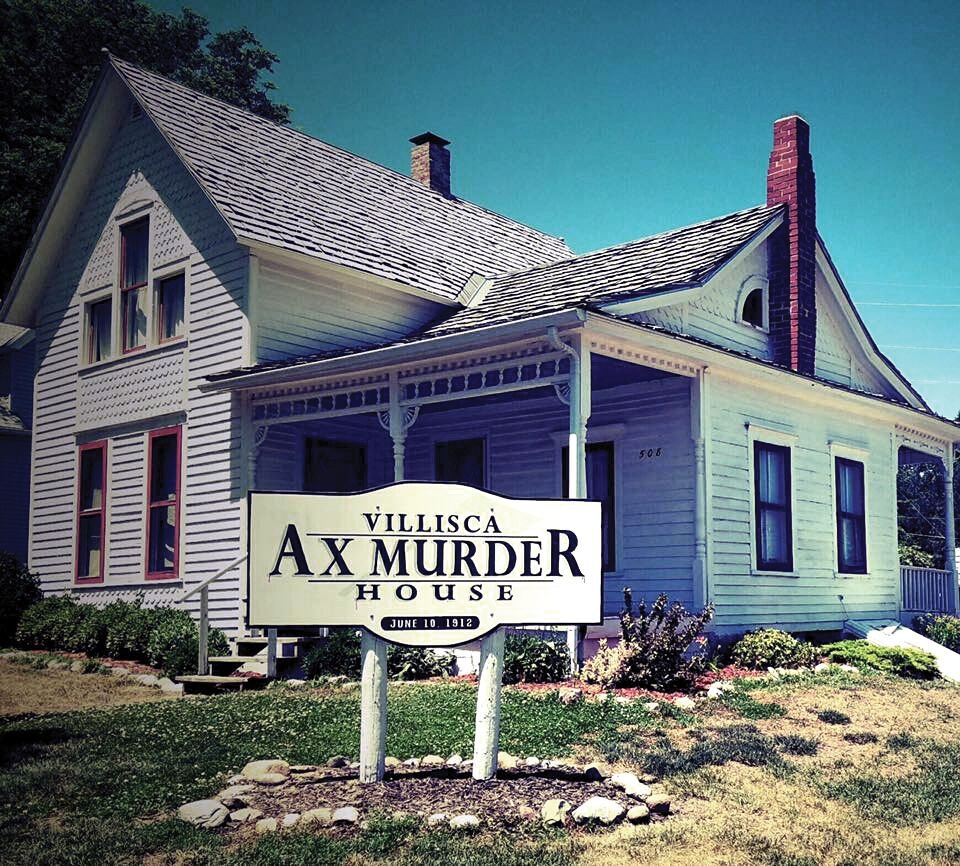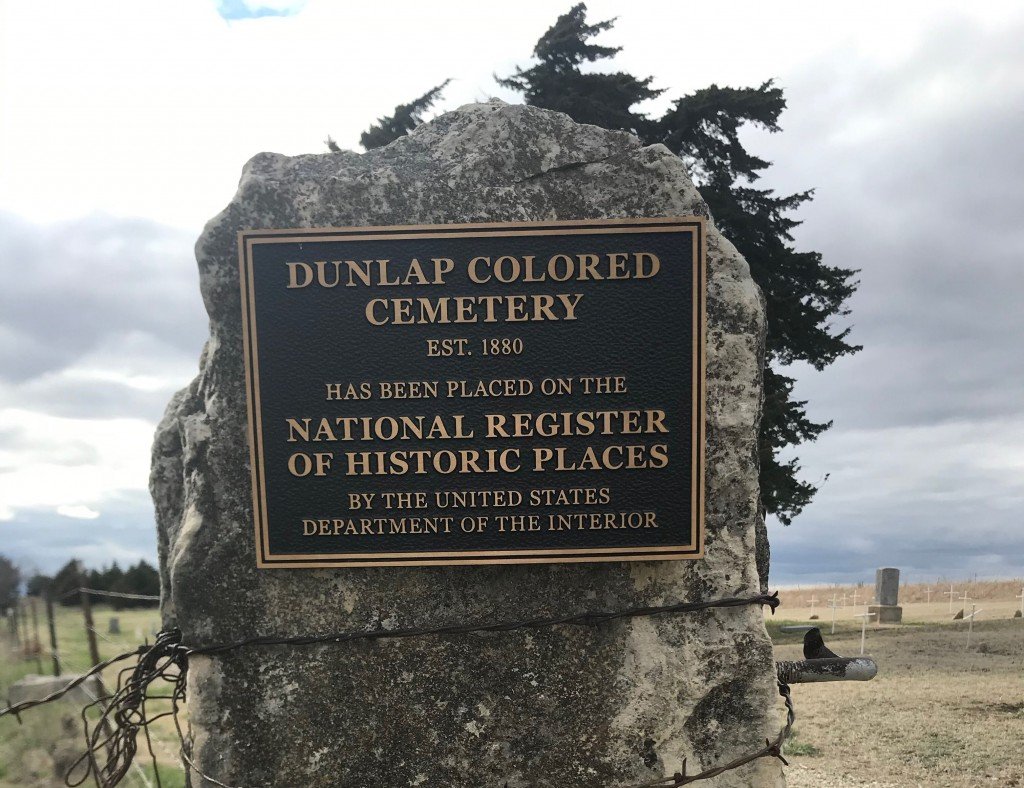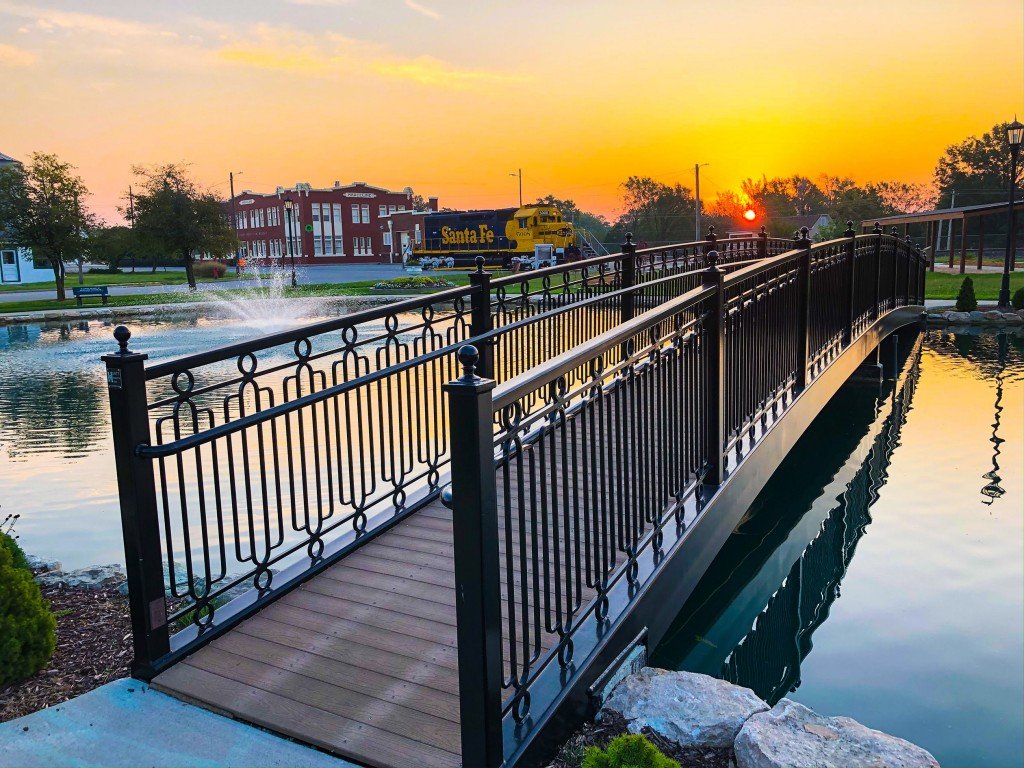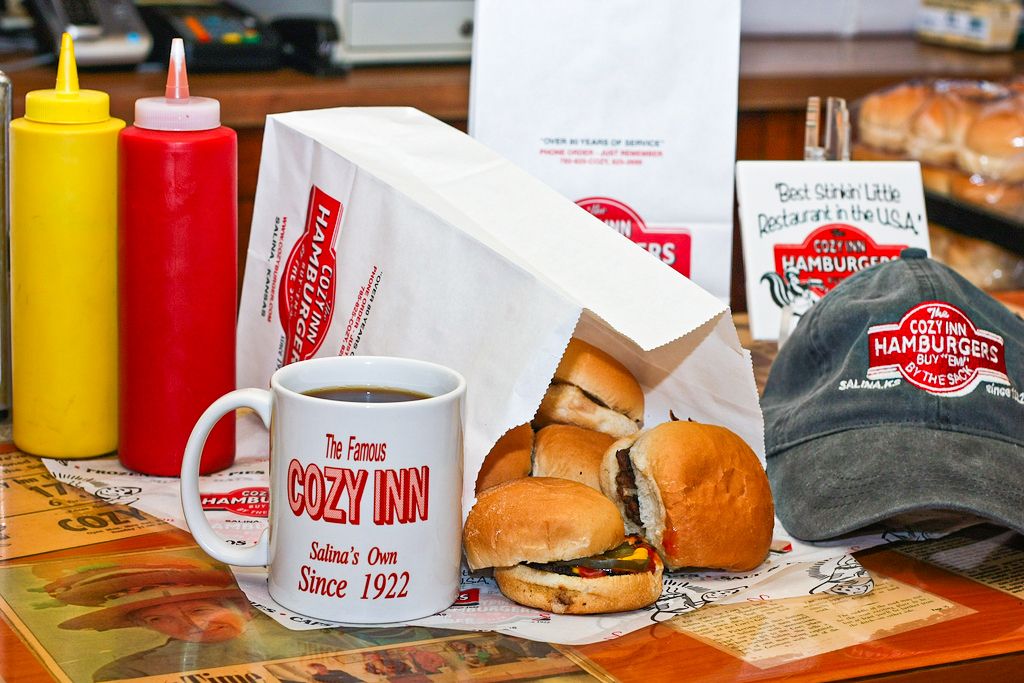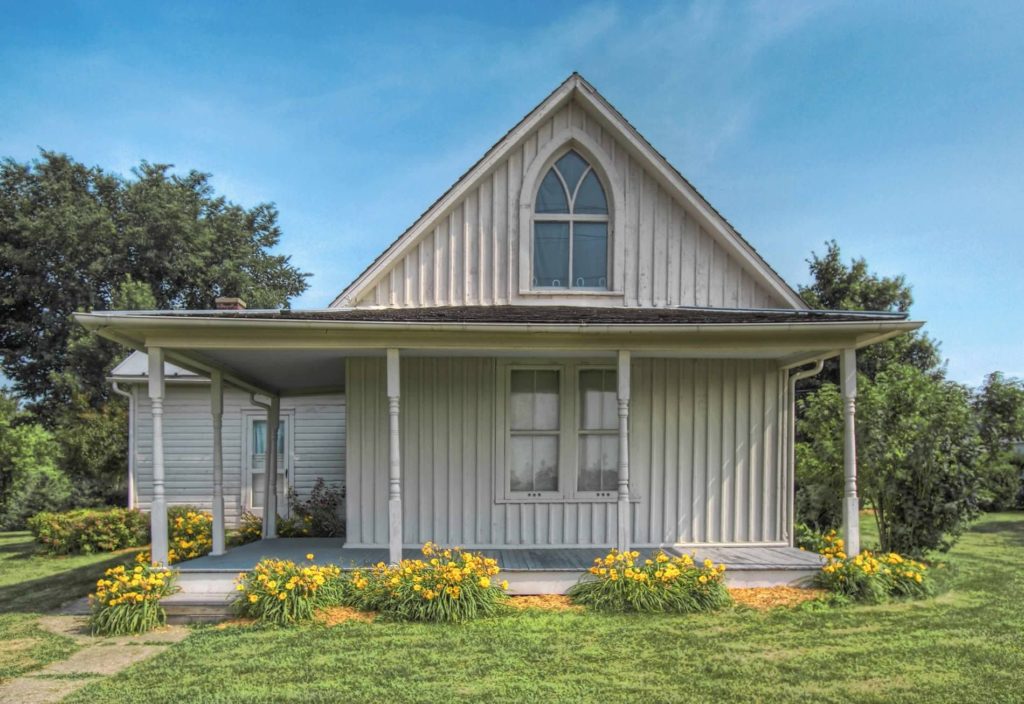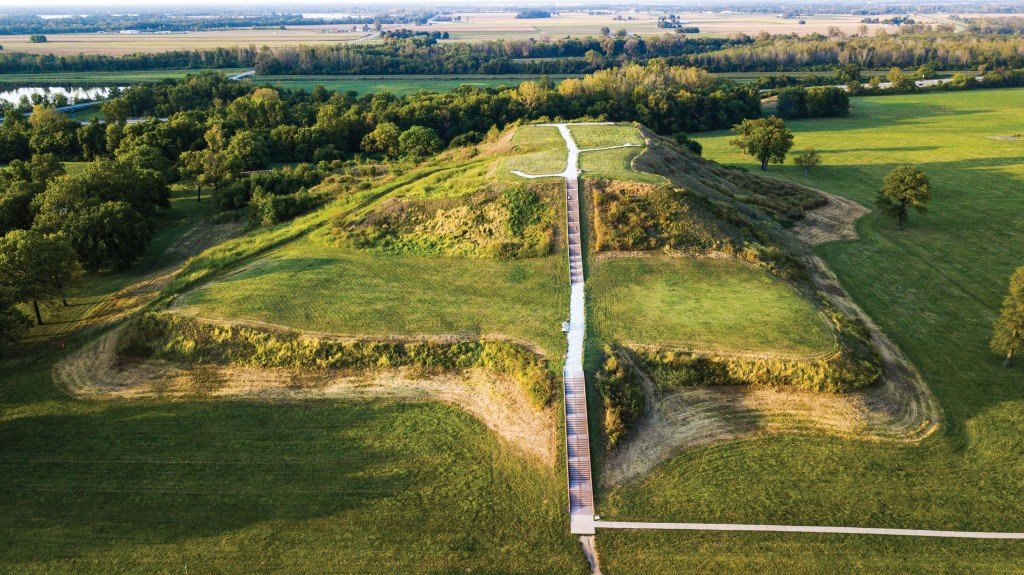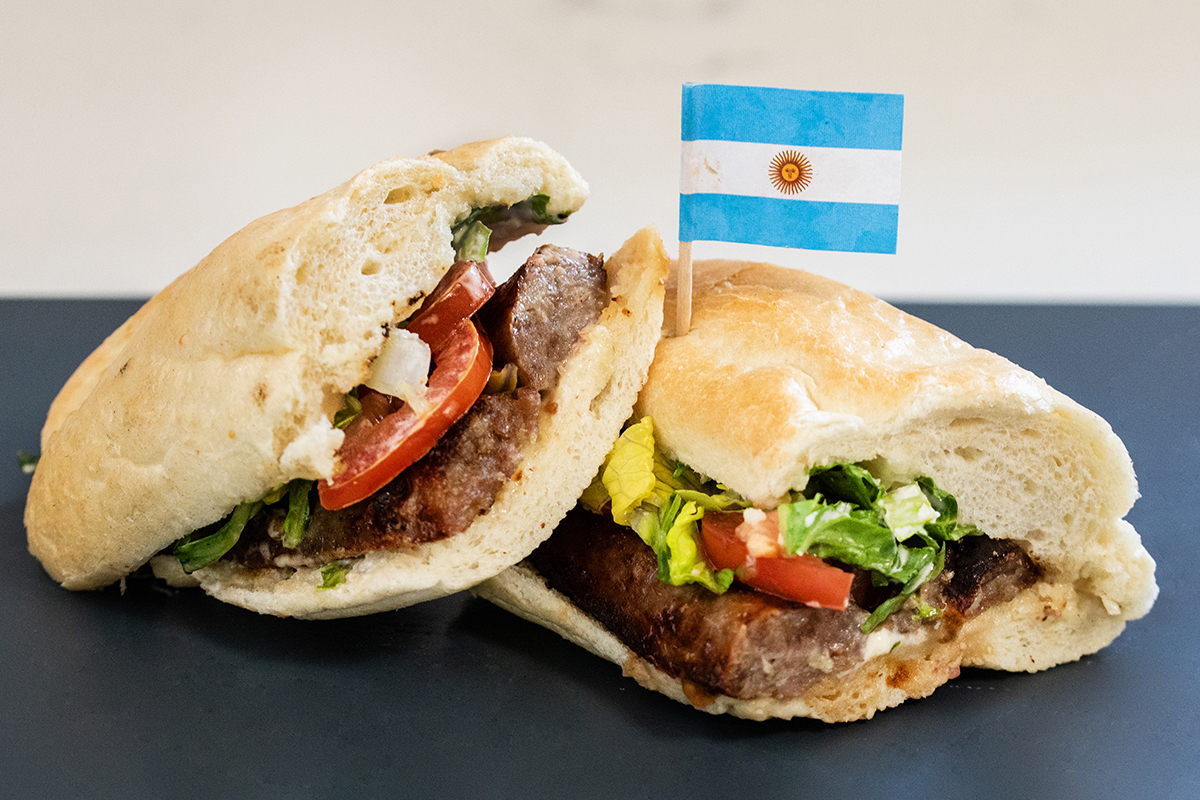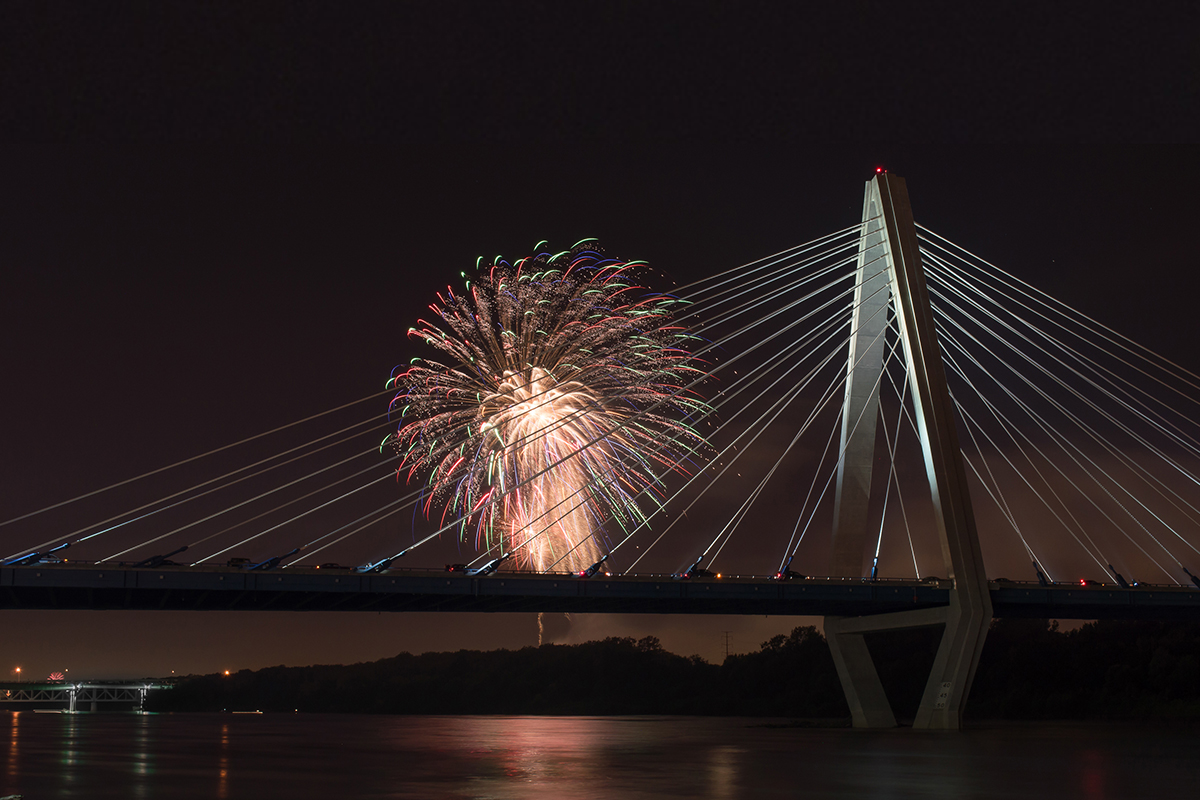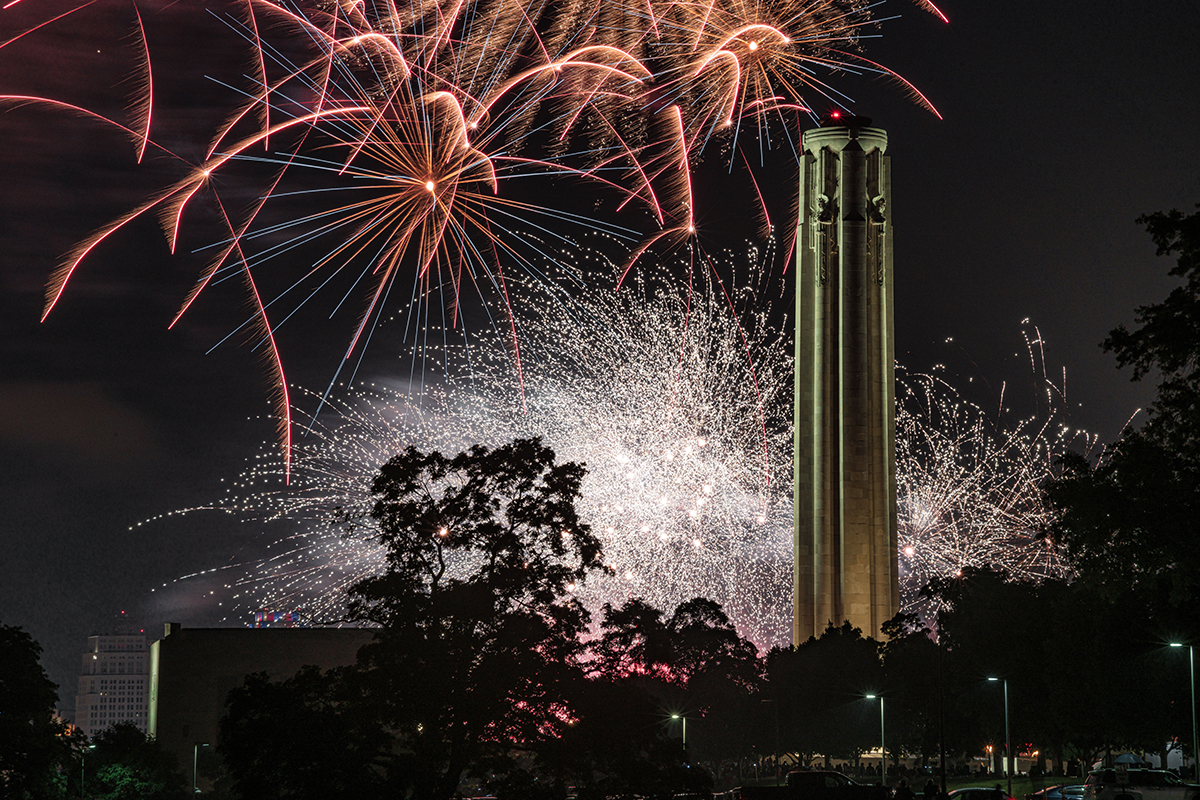Stir-crazy yet? After nearly three months of social distancing, that’s to be expected. And yet, things aren’t exactly back to normal. Never fear, we’re here to help with nine great history-focused day trips from Kansas City. We picked spots that offer excitement, fresh air and much-needed changes of scenery. Get out there, but remember to use common sense and follow CDC guidelines.
Retrace the footsteps of an iconic American freedom fighter in Osawatomie
After a mob executed an abolitionist minister, John Brown vowed to “consecrate my life to the destruction of slavery.” He achieved that through martyrdom following his failed plot to raid a Virginia armory and free African Americans held in bondage across the South. But Brown first took up arms in defense of black personhood while living in a small cabin in the rural Kansas town of Osawatomie. There, the man who would become an icon of freedom engaged in battles during the “Bleeding Kansas” era, starting with his bold leadership in bringing frontier justice to some of the thugs responsible for the sacking of the peaceful abolitionist settlement of Lawrence. Of all Brown’s heroics, the most impressive may be the skirmish documented on the signs at the John Brown Memorial Park in Osawatomie, where he led a severely outnumbered group of freedom fighters to a draw against a militia led by Missouri slaver John W. Reid. —Martin Cizmar
GO: From I-35 south, take the exit for Route 169 in Olathe and follow south for 30 miles to Osawatomie.
Walk through the earliest era of KC at Missouri Town 1855
While you’re there: Right outside the park you’ll find Jazzy B’s Diner, which has both traditional KC ’cue and sea-food. We like the funky blue cheese potato salad and a saucy brisket sandwich.
At Fleming Park in eastern Jackson County, you can glimpse KC life in another era. That starts on the way into Missouri Town 1855, where the buffalo roam, and continues inside the thirty acres set aside for the park. In these idyllic pastures, you’ll find antebellum homes and barns moved here for preservation, along with a working blacksmith shop firing a coal furnace and a dry goods store stocked with period products, some of which are for sale. When the park is open, expect to find reenactors dressed in period garb playfully encouraging you to vote in a mock election or giving a brief history of the Missouri mule. —Martin Cizmar
GO: Head east on I-70 or I-45 to I-470, then take exit 10A for Colbern Road. Follow signs to the park.
The site of a brutal bludgeoning spree is now open to thrill-seekers and paranormal investigators
In the tiny Iowa town of Villisca sits a house that would be completely unassuming if it weren’t for the sign in the yard reading “Ax Murder House.”
On June 10, 1912, eight people were bludgeoned to death here. It’s believed that the killer(s) hid out in the attic while waiting for the family to return home from a church function. After everyone fell asleep, the killer(s) emerged and bludgeoned Josiah and Sarah Moore, their four children and two young girls spending the night. The investigation yielded a number of suspects, but nobody was ever convicted, and the case remains unsolved to this day.
The house was a rental for many years before being restored to its original condition in the nineties—the owners removed the electricity, plumbing and garage and added an outhouse, chicken coop and barn. The house has been the subject of a number of books and movies and has been featured on paranormal docu-reality shows such as Ghost Adventures and Most Terrifying Places in America.
Today, the house operates as a museum and tourist attraction. Visitors can take tours during the day for ten dollars. The tour includes a video and a quick lesson on the history of the house. Then the tour guide will leave you and your group alone with the house—and whatever other residents may still be there. For true thrill-seekers and paranormal enthusiasts, a group of six or fewer can reserve the entire house for overnight tours and investigations for just four hundred twenty-eight.—Ethan Evans
GO: Take I-29 north to St. Joseph, then take exit 56A to get onto US-71 north and go 66 miles to Villisca. Take a right on High Street, a right on 5th Avenue and then a left onto East 2nd Street.
An abandoned town is as cool as it is creepy
Type “Dunlap, Kansas” into Google Maps, and there sits a small square around an unincorporated town on the eastern edge of the Flint Hills.
Dunlap was once a town for Exodusters—freed slaves fleeing to Kansas—during the Reconstruction Era that followed the Civil War. Exoduster Benjamin “Pap” Singleton migrated to Dunlap from Tennessee and started a colony there in 1880. Life for the Exodusters wasn’t easy. They were forced to segregate and treated poorly by white settlers. There was even a separate cemetery for Exodusters.
The population of Dunlap dwindled around the time of the Great Depression, and the town filed for bankruptcy. In 1988, Dunlap’s post office shut its doors, and in 1993, Dunlap’s last black resident was buried in the colored cemetery. Not much is there today. A few deserted homes and an abandoned high school gymnasium still stand despite the school being demolished over a decade ago. One poignant reminder of the town’s history is the Colored Cemetery. The Dunlap City Cemetery sits right on the edge of town while the Colored Cemetery, which was inducted into the National Register of Historic Places in 2018, is about a half mile out in the rolling Kansas hills. —Nicole Bradley
GO: Take I-70 to Topeka. Hop on I-470 and take the Kansas Turnpike. Take exit 147 toward US-56/Council Grove/Osage City/Admire. Take US-56 until you hit Road F, then take F until Road 290, which will take you into Dunlap.
Stroll the original Main Street, USA
Back in February, Chiefs superstar Patrick Mahomes rode down Main Street, USA, at Walt Disney World. What took him thousands of miles and a Superbowl victory is much simpler for the rest of us: Hop in the car and drive a couple of hours to Marceline, Missouri—home of the original Main Street, USA. Marceline (population 2,233) was Walt Disney’s hometown, and its Main Street is the model he mandated for the Main Streets at his theme parks around the world.
Walt’s father, Elias Disney, brought the family here in 1906 to start a forty-eight-acre farm. Although the family left four years later, when Walt was nine, the town held a place in his imagination.
“More things of importance happened to me in Marceline than have happened in the past or are likely to happen in the future,” Walt once said.
Start your trip at Ma Vic’s Corner Cafe for a Dusty Miller, the ice cream treat original to Marceline since the early 1900s. From there, it’s just a few steps to the Walt Disney Hometown Museum, a ten-thousand-square-foot, two-story structure housed in the 1913 Santa Fe Railway Station. Walt’s only sister, Ruth Disney Becher, gifted thousands of family artifacts to the museum. On the grounds you’ll find the resto-ration of the Midget Autopia Ride, the only ride to leave Disneyland and be operated outside of a Disney property. You can walk or pedal your way around the track in your own custom Autopia car.
Nearby is a bandshell that’s familiar from Disney films. Note that the marquee proclaims the “World Premiere of the Great Locomotive Chase”—Walt and his brother Roy came home in 1956 for the premiere and greeted each child as they entered the theater. Walt addressed the crowd on that occasion: “You children are lucky to live in Marceline. My best memories are the years I spent here.”
In attendance was a little girl named Kaye Malins, who grew up to become the director of the Disney Museum.
Even the post office here, named for Walt Disney, is unique—they stamp mail with a one-of-a-kind cancellation. Not far away is the Disney Farm and Barn, which has a replica of the barn. Walt kept the blueprints of the original structure, such was his obsession with this little town. —John C. Tibbetts
GO: Marceline is 135 miles from Kansas City. Take I-35 north to Cameron, then go east on US-36 for 70 miles and watch for the sign to Marceline.
Buy sliders by the sack in Salina
Stop at the Cozy Inn for a sack of sliders and you’ll smell like onions for the rest of the day. But it’s so worth it.
The tiny town of Salina’s iconic burger joint opened in 1922, a year after White Castle debuted the slider just an hour and a half south in Wichita.
The onion-packed patties at the Cozy Inn are smashed thin and grilled on a grease-dripped flattop—current owner Steve Howard confirms it’s the same one that was used on opening day almost a century ago. “It’s got a little warp to it, but it still works great,” Howard says. “We clean it every night with a little oil and a lot of elbow grease.”
Whether you order inside the tiny six-seat building or at the walk-up window, you’ll be asked three questions: “How many?” “All the way?” (ketchup, mustard and pickle—no cheese on these burgers) and “Chips or drink?” Remember: The onions aren’t optional. —Nicole Bradley
GO: Take I-70 to Topeka until you hit the Salina exit. Follow North Ninth Street. Take a left on West Iron Avenue, then a left on Seventh Street. You’ll see Cozy’s neon sign and red-and-white-striped awnings.
Pose for a portrait in front of one of the most iconic backdrops in American art
There are no stoplights in Eldon, a tiny town nestled deep between the rolling green hills and golden cornfields of southern Iowa. There’s a small grocery store ten miles away; you’ll have to drive an hour and a half to Iowa City if you want to find a Starbucks. All things considered, it’s a surprising place to find the inspiration for one of the world’s most iconic paintings.
You don’t need to be an art savant to recognize Grant Wood’s seminal 1930 masterpiece “American Gothic.” The portrait of a dour farmer father and his daughter (Wood’s sister and his dentist, in fact, both of whom he asked to pose for the painting) in front of a humble white house with its ostentatious gothic window has been parodied countless times in editorial cartoons, advertisements and magazine covers. When you visit the original American Gothic House in Eldon, the visitor center happily provides costumes and props for you to recreate your own portrait, from the overalls and patterned apron down to the cameo hayfork and necklace.
Most of the time, the house is closed to visitors. There is something surreal about seeing the small home in person, though you’ll have to content yourself with posing in front of it and walking around the well-kept lawn. The visitor center, open a few hours each month, contains a compact room packed with information about Wood’s life and work, as well as the history of the house—it was built in 1881, and Wood only visited it twice.
“American Gothic” is often interpreted as a satirical work, but that was never Wood’s intention. Rather, his aim was to exalt the Midwestern spirit: There is admiration in the fine lines of his subjects’ faces and fastidious attention to detail in the pattern on the window curtains. —Natalie Gallagher
GO: Eldon is 225 miles from KC. From I-35 north, take exit 92 for US-136 east. US-136 east merges with US 63 north after 90 miles. Continue on US-63 and follow for 12 miles to Floris Road. Take Floris Road to downtown Eldon, then take a left on Ninth Street, a right on Elm Street and a left on Finney.
While you’re there: Not far from Eldon is the small town of Ottumwa, where you’ll find the state of Iowa’s signature sandwich at Canteen Lunch in the Alley. Inside this squat yellow building, there’s a horseshoe bar wrapped around the restaurant’s centerpiece: a freestanding metal steamer that cooks over a hundred and fifty pounds of ground beef daily, seasoned only with salt. Loose-meat sandwiches here are available with cheese and “everything” (ketchup, mustard, pickle and onion). They’re four dollars and ten cents, and they’re utterly satisfying.
The most impressive native American ruins north of Mexico
There was a time when St. Louis was the largest city in the country. Well, not St. Louis, exactly, but Cahokia, the Native American settlement on the eastern shore of the Mississippi. Archaeologists believe it was as large as London during the High Middle Ages, around the time William the Conqueror was leading the Norman Conquest of England. Monk’s Mound is the largest Native American mound north of Mexico and one of only two dozen UNESCO World Heritage Sites within the United States. It rises a hundred feet over East St. Louis, offering views of the arch and the city skyline. —Martin Cizmar
GO: Cahokia is 258 miles east of Kansas City. Take I-70 east to exit 6, then go east on Collinsville Road to the mounds.
While you’re there: Once the largest train station in the world, St. Louis’ Union Station is now home to attractions including the new St. Louis Aquarium, a massive aquatic attraction with 13,000 animals including a massive shark exhibit and adorable otters. The aquarium opened last Christmas and has quickly risen to one of the top tourism destinations in STL.
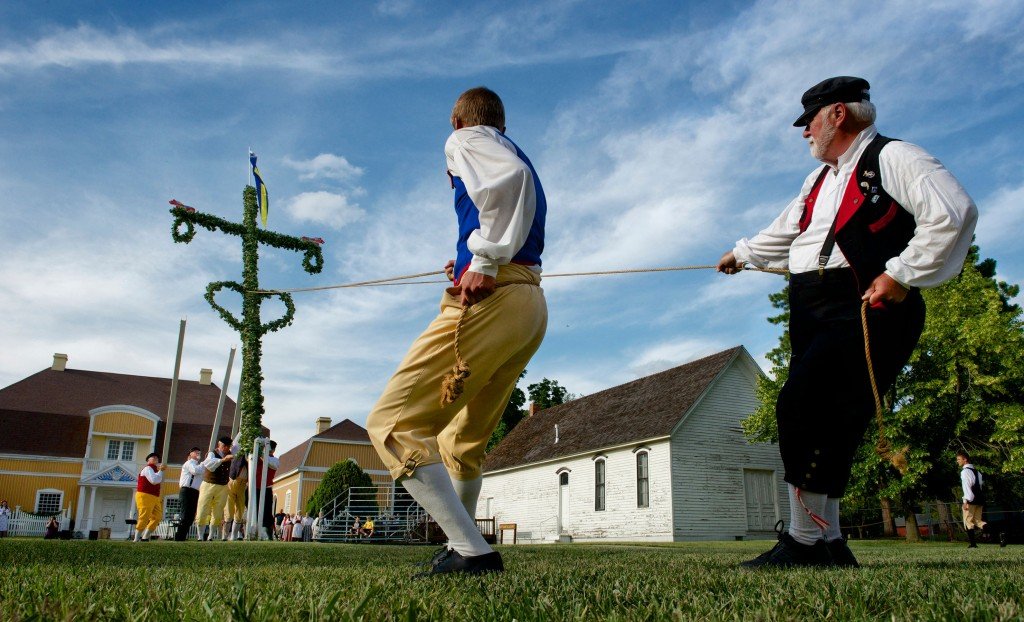
Little Sweden, USA, is in Kansas
Walking down the street of Lindsborg, Kansas, is like walking through a storybook.
Sprinkled throughout the cobblestone street town are Swedish boutiques, herds of painted Dala horses, art galleries and colorful dollhouse bed and breakfasts.
The town of Lindsborg was settled in and built up by Swedish immigrants in 1869. Today, thirty percent of Lindsborg’s three thousand-resident population are natively Swedish. So don’t be surprised if, when walking down the streets of Lindsborg, someone wishes you “god dag” (for non-Swede folk, that means “good day”).
Across the street from Lindsborg’s Smoky Valley Roller Mill, which once operated as a national flour mill in the 1880s, is Heritage Square, a photogenic fenced-off plaza of colorful historic buildings including a one-room school-house, a railroad depot and the first McPherson County Courthouse. The Swedish Pavilion that sits at the north end of the square was brought over from Sweden for the 1904 World’s Fair in St. Louis.
If you’re in town and in need of a pick-me-up, I recommend stopping by the Blacksmith Coffee Shop, which is in a century-old building that once operated as an actual blacksmith shop. The almond-flavored cafe latte is divine. —Nicole Bradley
GO: Take the scenic route on this one—drive two hours south-west on I-35 until you reach Emporia, then hop on US-50 to pass through Tallgrass Prairie National Reserve, just north of Strong City. Take US-150, which turns into US-56, until you hit I-135 and go north. Get off on the Smoky Valley Road exit. Take a right on 14th Avenue, then a left on E. Lincoln Street, which will take you into town.

